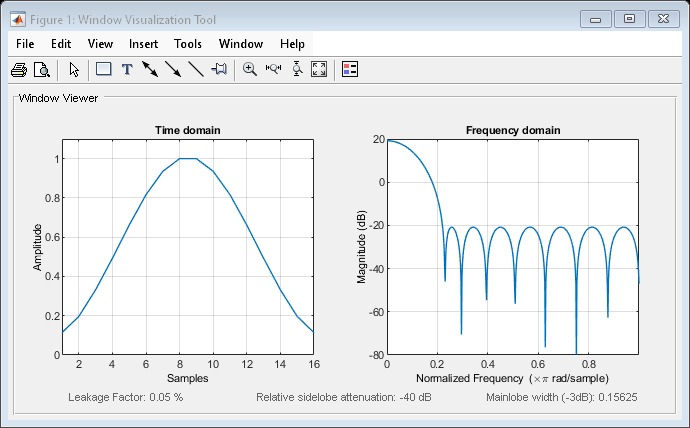Kya dil mein hai serial last episode. Mar 14, 2018 - This MATLAB function returns a Dolph-Chebyshev window object H of length 64 with relative sidelobe attenuation of 100 dB. Antenna Arrays.
Click the following links for downloading the corresponding PDF files. If you want the clip-art used in these files, click. Phased Arrays & Antennas: • (Last revision: ) • (Last revision: ) These two articles are meant to understand the concept of polarization more clearly. In my opinion, Ludwig-3 definition is still a good compromise among various available polarization definitions.

• (Last revision: ) • • (Last revision: ) • (Last revision: ) • (Last revision: ) • (grating-lobe analysis) • (Last revision: ) • • • (reflector antenna theory) Electromagnetics & Microwave Circuits. Regarding my previous project (MATLAB version of the “Arraytool”, which is not open source) When I was an undergraduate, I had this wonderful opportunity to study a book by “E.
The book was Electromagnetic Waves And Radiating Systems. It introduced me to a wonderful world of radiation, fields, antennas and so many other things. But one thing that really attracted me was the concept of analysis and synthesis of antenna arrays. Though the theory provided on antenna arrays in that book is not of advanced level, it gave me an insight into this beautiful world of imaginary electromagnetic waves trying to co-ordinate (interfere) with each other so that they can fulfill their assigned jobs (like scanning or adjusting side lobes, etc). But unfortunately to analyze even a very simple array, I had to do cumbersome array factor evaluations to finding pattern nulls, gain, etc. I am not saying that those calculations were useless.
As a matter of fact, those manual computations give us very interesting insight into concepts such as grating lobes, side-lobe level, etc. However, human brains have their limitations. So, as the number of array elements increases, we need to use computer for all those numerical calculations.
If at all possible, remember to use the prefix (^) and ($) suffix indicators. Searching using a regular expression is resource intensive. Enter details This tool shows all article titles that match a regular expression pattern (). Kartinki abonent umer ho. Language:.xxx.org Project: xxx..org Namespace: Pattern: / / Include redirects Limit the display to the first 100 results Results 1010497 pages matched your regular expression.
However, we don’t have proper tools to educate students (or engineers) on this topic. Yes, we do have CAD tools such as HFSS, CST, ADS, etc and they are very helpful for a microwave engineer.
But, a devoted tool providing all possible solutions for antenna arrays is not available at this moment. So, I decided to create a GUI program based on MATLAB which can answer at least some of the very important issues related my favorite topic. This project is still under construction like all my other projects 🙂 P.S. At the time of writing this post, I was not aware of the following tools which also deal with phased array antenna design: • • Anyhow, here are some screen-shots of the “partially completed program”: Grating-Lobe Analysis (Circular Pyramidal Scan) Grating-Lobe Analysis (Rectangular Pyramidal Scan) For further information regarding Grating Lobe Analysis, here. A simple linear Taylor array (rectangular radiation pattern) For further information on Generalized Discrete Taylor & Bayliss Distribution, here. A simple linear Dolph-Chebyshev array (polar radiation pattern) Pattern-Multiplication shown in rectangular plot Pattern-Multiplication shown in polar plot Radiation pattern cuts (Theta & Phi) in UV-domain Contour as well as 3D patterns corresponding to a linear array Contour as well as 3D patterns corresponding to a planar array (Circular Taylor) Pattern corresponding to a given arbitrary array excitation I/P Shaped beam Synthesis (here, using simple Woodward-Lawson method) Shaped beam Synthesis (here, using simple Woodward-Lawson method).
Regarding my previous project (MATLAB version of the “Arraytool”, which is not open source) When I was an undergraduate, I had this wonderful opportunity to study a book by “E. The book was Electromagnetic Waves And Radiating Systems. It introduced me to a wonderful world of radiation, fields, antennas and so many other things.
But one thing that really attracted me was the concept of analysis and synthesis of antenna arrays. Though the theory provided on antenna arrays in that book is not of advanced level, it gave me an insight into this beautiful world of imaginary electromagnetic waves trying to co-ordinate (interfere) with each other so that they can fulfill their assigned jobs (like scanning or adjusting side lobes, etc). But unfortunately to analyze even a very simple array, I had to do cumbersome array factor evaluations to finding pattern nulls, gain, etc. I am not saying that those calculations were useless.
Blog
- Explorers 1985 Torrent Download
- Harvi I Merilin Dajmond
- Download Free Paragon Partition Manager 9 Crack Download And Software 2016
- Muvee Reveal Essentials Stylepack Serial
- Trafaret Krasivij Russkij Alfavit
- Download Driver Modem Speedup Untuk Windows 8
- Yankelevich Yu I Pedagogicheskoe Nasledie
- Kniga Prostoe I Ponyatnoe Programmirovanie V Codesys
- Omnisphere 158d Keygen
- Zayavlenie O Zamene Klassnogo Rukovoditelya
- Download Song Badan Pe Sitare By Darshan Raval
- Spori Mezhdu Bazarovim I Pavlom Petrovichem Tablica 8 Klass
- Edraw Office Viewer Component 8 Crack Download Free Apps